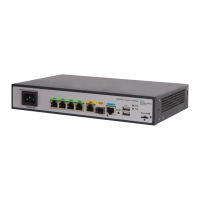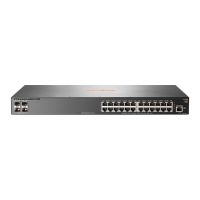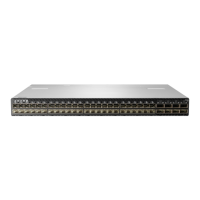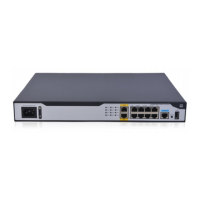133
Parameters
pse pse-id: Specifies a PSE ID. To display PSE ID and slot mappings, use the display poe device
command.
Examples
# Display the status of all PIs on PSE 7.
<Sysname> display poe pse 7 interface
Interface PoE Priority CurPower Oper IEEE Detection
(W) Class Status
GE1/0/1 Enabled Low 4.4 On 1 Delivering
Power
GE1/0/2 Enabled Critical 0.0 Power-lack - Disabled
GE1/0/3 Enabled Low 0.0 Power-deny - Disabled
GE1/0/4 Enabled Critical 0.0 On - Searching
GE1/0/5 Enabled Low 4.0 Power-limit 2 Delivering
Power
GE1/0/6 Enabled Low 0.0 Power-itself - Disabled
GE1/0/7 Disabled Low 0.0 Off - Fault
--- On State Ports: 2; Used: 8.4(W); Remaining: 171.6 (W) ---
Table 27 Command output
Interface Interface name of a PI.
PoE
PoE status of a PI:
• Enabled.
• Disabled.
Priority
Priority of a PI:
• Critical (highest).
• High.
• Low.
CurPower Current power of a PI.
Oper
Operating status of a PI:
• Off—PoE is disabled.
• On—Power is being supplied to the PI correctly.
• Power-lack—Remaining guaranteed power is insufficient for a
critical PI.
• Power-deny—The
PSE refuses to supply power. The power
required by the PD is higher than the configured power.
• Power-itself—The PD is using another power supply.
• Power-limit—The PSE is supplying power to the PD based on
the configured power though the PD requires more power than
the configured power.
IEEE Class
PD power class: 0, 1, 2, 3, or 4.
If the PSE does not support PD classification, this field displays a
hyphen (-).
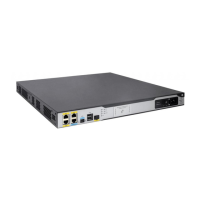
